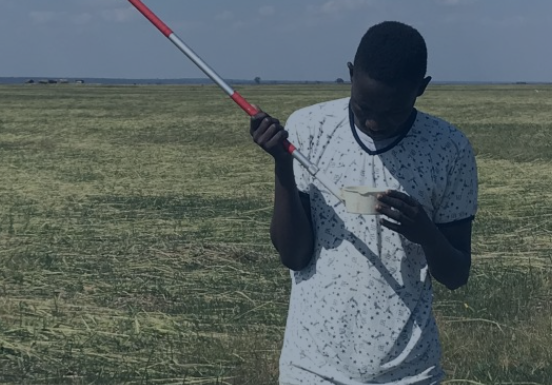New research has revealed that further intervention methods may be required to reduce the transmission of malaria throughout certain parts of Africa – to combat the daytime-biting species of mosquitos found there.


Over the last twenty years there have been huge reductions in transmission as part of the drive for global malaria elimination. Public health initiatives such as bed-nets and indoor spraying with insecticide are a major element in the fight against malaria, but in some areas, such as western Zambia, malaria prevalence remains high.
A team led by the University of Lincoln, UK, with Aberystwyth University and the University of Leeds, has worked with the Zambian Ministry of Health to gain more understanding on the relationship between malaria transmission and environment in Zambia’s Western Province. This vast area is home to around one million people and is seasonally flooded by the Zambezi river, creating a complex network of channels and wetlands.
Over three years, the team trapped mosquitos overnight in remote villages and waded in swamps to sample larvae. Mosquitoes were then identified using DNA techniques back in the laboratory. The outcomes of this research have recently been published in Scientific Reports.
Many species of mosquito can act as vectors of human malaria. The surveys found that the majority of species in the area were those that tend to bite outdoors and during daytime or dusk hours, unlike the more usual vector species in Africa, which tend to bite at night and indoors as people sleep.
Outdoor and daytime biting species could therefore evade the protection usually afforded from bed nets and indoor spraying and researchers believe this could be contributing to the residual transmission in the area.
The FLOODMAL project, funded by the UK Natural Environment Research Council, builds on previous research by the team on how climate change impacts mosquito populations and malaria transmission.
Malaria is often highly seasonal following the rains or water movement across the land to provide breeding sites, with mosquito population dynamics also affected by humidity and temperature. Furthermore, the seasonal flooding of the Zambezi is becoming increasingly variable in combination with severe droughts in the area.
The impact of climate change on disease transmission is therefore a major concern for scientists, who are trying to understand how communities and services can best adapt to the public health consequences of these changes.
New methods of computer modelling using hydrological and hydraulic models of water distribution and flow combined with high resolution satellite imagery have been developed by the team to predict and map, weeks in advance, the presence of water bodies where mosquitoes breed.
By understanding where water will be in relation to local communities, the scientists hope to predict the risk of malaria across entire landscapes and guide public health interventions by informing medical services where hotspots are likely to arise. This will allow them to implement targeted prevention and treatment programmes.
Professor Chris Thomas, Global Chair in Water and Planetary Health at the University of Lincoln, who led the project, said “We want to help guide public health interventions through an interdisciplinary approach.
“We are working with the Zambian Ministry of Health and a multi-disciplinary team of researchers from Zambia, Canada and the UK to tackle a range of health issues. For malaria in particular we’re trying to predict transmission levels in this very dynamic landscape using our geographic-ecological techniques.
“The team will be returning to Zambia in the near future. We need now to establish exactly how much transmission the different mosquito species we are finding are responsible for and if additional interventions can help reduce this.”






































